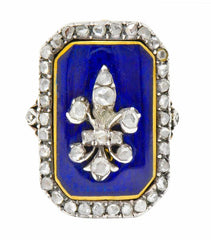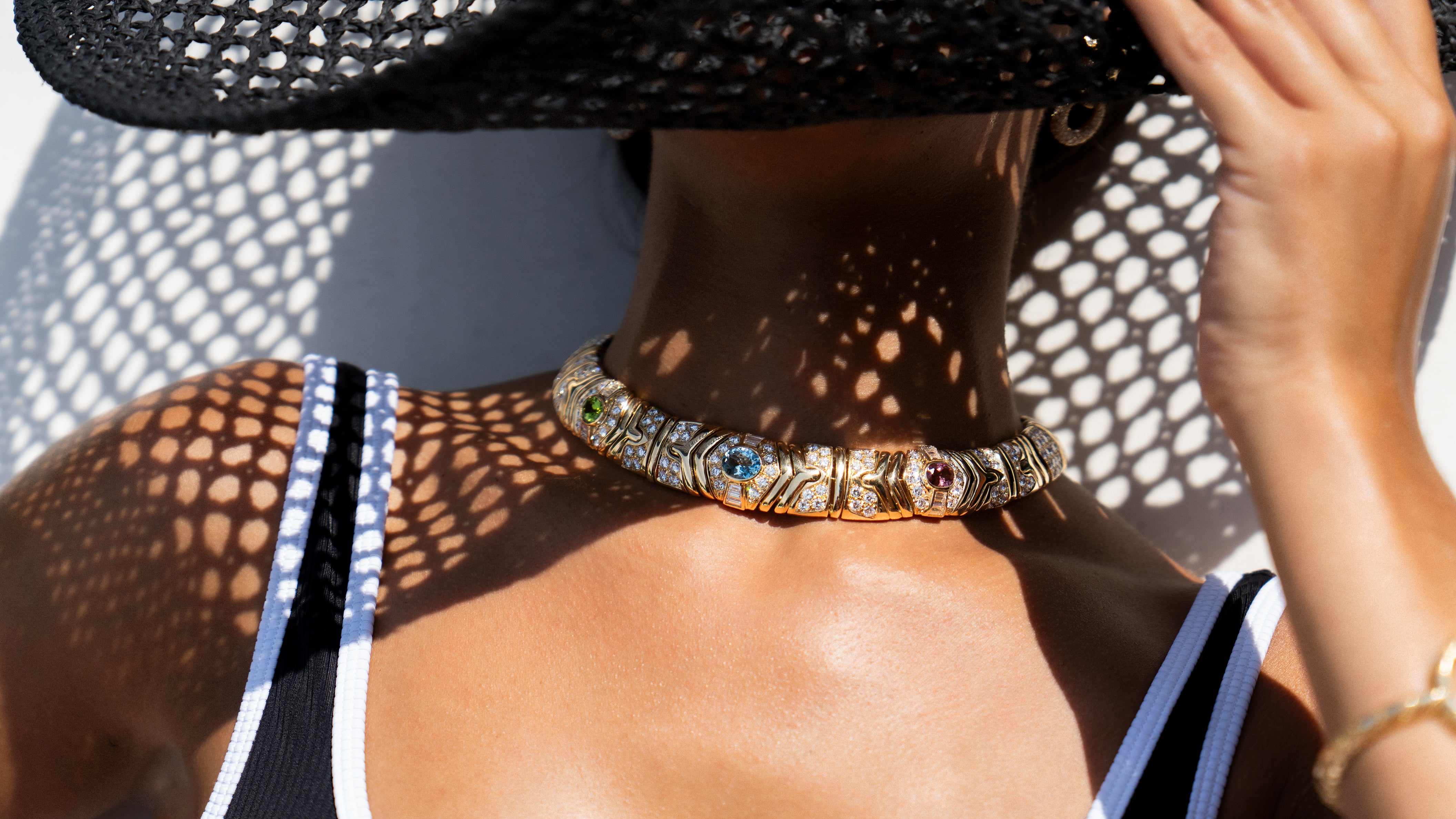Georgian Jewelry: 1714-1837
Georgian Jewelry 1714-1837
Four British Georges gave this period its name. Nonetheless, the Georgian era was also heavily influenced by circumstances in France, Germany, Italy, and other European countries.

Georges I-IV and William IV reigned over England for a combined total of over 120 years. The Georgian era encompassed tremendous changes worldwide, influenced by the likes of Mozart, Gainsborough, and the Rococo, Neoclassicism, and Romanticism aesthetics. America fought a war for independence. France had a revolution of its own. And Russia was led by Catherine the Great. Plus, there were incredible advances in science and exploration, the birth of the railroad, and changing roles for women in society. It’s no wonder Georgian jewelry reflected so many divergent influences.
Georgian Style
Before 1750, the Baroque style was the primary influence that featured heavy symmetrical ornate pieces. This time focused on designing jewelry as bow and floral motifs.
Rococo style succeeded Baroque, presenting more open, light, asymmetrical designs; focusing on functional jewelry with repoussé and engraved floral details.

Fashionistas in Georgian times accessorized with a variety of jewels, including:
- Tiaras, diadems, and bandeaus: awash in diamonds and colored gemstones, as well as aigrettes, combs, and hairpins that rested atop and within towering wigs.
- Girandole earrings: These chandelier style dangle earrings were very ornate, displaying diamonds and gemstones that shimmered with every turn of the head.
- Navette: oval and rectangular shaped rings
- Bracelets: always a welcome addition to one’s jewelry wardrobe.
- Long chains: in a variety of shapes featuring patterned links, knitted or woven.
- Artisans created memorial mourning and portrait jewelry to commemorate a loved one.
- Cameos were designed with coral, agate, and shell, worn in brooches, rings and necklaces.
- The pendeloque: a diamond or other gemstone cut into a pear shape, was popularly seen dangling from necklaces and earrings.
- Given the low-cut nature of Georgian dresses, choker necklaces were a fashion essential.
- Riviere necklaces: featured a strand of gemstones, individually set and linked together.
- Chatelaines: the precursor to the modern pocketbook, carried implements such as scissors, writing instruments, eyeglasses, and watches.
- Parures: suites of mix-and-match pieces, were convertible, so a brooch, with the addition of a ribbon or chain, could be worn as a pendant; a necklace could become two bracelets. The parure provided versatility to a Georgian woman’s jewelry wardrobe.
- Men’s fashion appeared in shoe buckles and buttons crafted of every possible material and decorated with diamonds, gemstones, or glass.
Georgian Materials
Settings could be fashioned in silver, 18 karat yellow gold (sometimes higher), steel, iron, and pinchbeck (a copper setting alloyed with zinc).
Culturally diamonds were preferred for evening dress whereas colored stones were appropriate for day wear. Popular gemstones included sapphires, rubies, topazes, garnets, coral, agates, chrysoberyl, pearls, as well as organic materials such as shells.

In 1780, glass (or “paste”) entered into jewelry making a less expensive alternative to gemstones. Jewelry was no longer the exclusive purview of the rich and royal; it was becoming widely available to the middle class, creating a market for affordable fashions.
Georgian Techniques
Gemstones were cut in a variety of ways, and jewelers were experimenting with burgeoning cuts such as the rose cut, table cut, and the old mine cut.

Large center gemstones of lesser quality were often encased in settings with a colored piece of foil backing to enhance their beauty, particularly by candlelight.
Jewels designed to create movement were set en tremblant. Examples of this technique could be found most often in earrings, brooches, and hair combs.
Georgian metalworkers often used a technique called repoussé, whereby the craftsman hammered intricate designs and patterns into the metal from the reverse side.
Because each gold piece was handcrafted, the artisans were able to create stunning detail work and avoid the surface pitting that occurred later with casting molds.
Cannetille, a metalworking application that became popular in the 1820s and 1830s, featuring detailed wirework fashions inspired by embroidery patterns. This technique resulted in stunning filigree patterns.
Other popular techniques during the Georgian era included enameling and glass overlays.

Georgian Motifs
Foliate themes were quite popular in Georgian jewelry, as well as ribbons, cornucopia, crosses, crescents, leaves, bows, and feathery plumes.
The ruins of Pompeii, excavated from 1706 to 1814, decidedly influenced Georgian jewelry during this time. Designs that incorporated Greek and Roman themes, such as Greek keys, grape leaves, and laurels, were desirable. At the end of the 18th Century, Napoleon’s campaign in Egypt inspired motifs that included pyramids and papyrus leaves.
This and That
- Until 1750 when the rolling mill was invented, jewelry artisans were required to hammer metal into thin, uniform sheets, a grueling process that was exceedingly labor-intensive.
- Makers’ marks and gold assaying weren’t required until the 1900s. Thus, it can be challenging to identify pieces that have survived from the Georgian era.
- Fer de Berlin jewels (aka Berlin Iron) were replica pieces that were created from precious designs that the Germans had donated to the war effort. Frequently inscribed with the words, “Gold gab ich fur eisen” (translated, “I gave gold for iron”), these pieces remained popular even after the threat of Napoleonic invasion had passed; and are highly collectible to this day.
- Because fashion jewelry during this time was often melted down to create something new, it is challenging to find remaining examples of jewels from the Georgian era.
Browse our Selection of Georgian Jewelry
